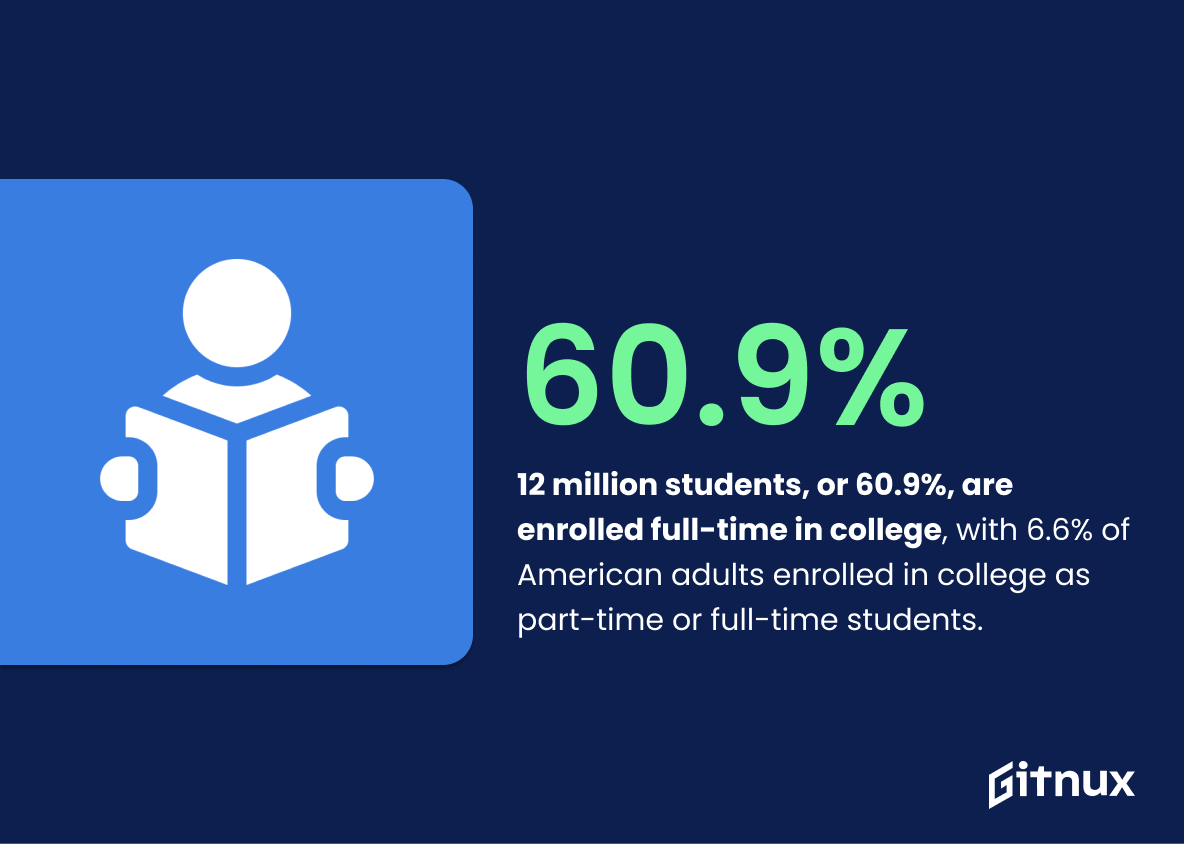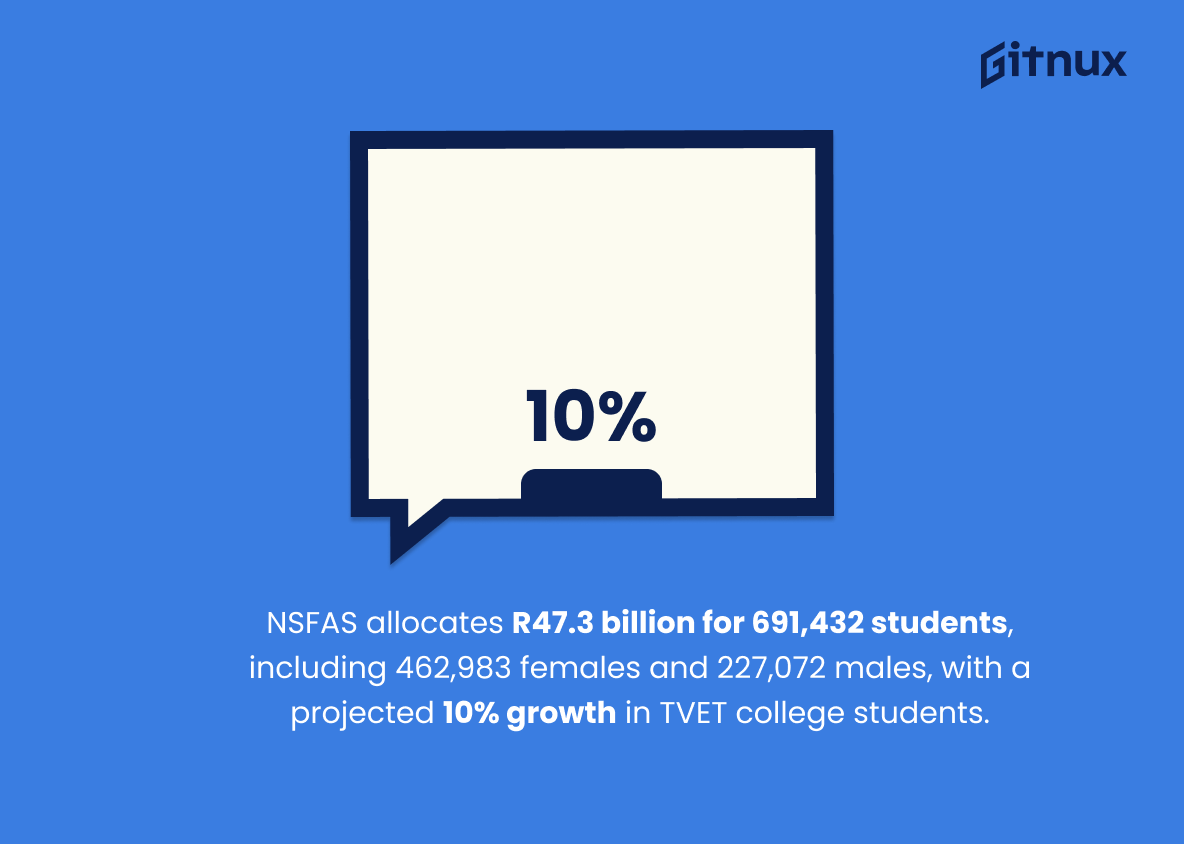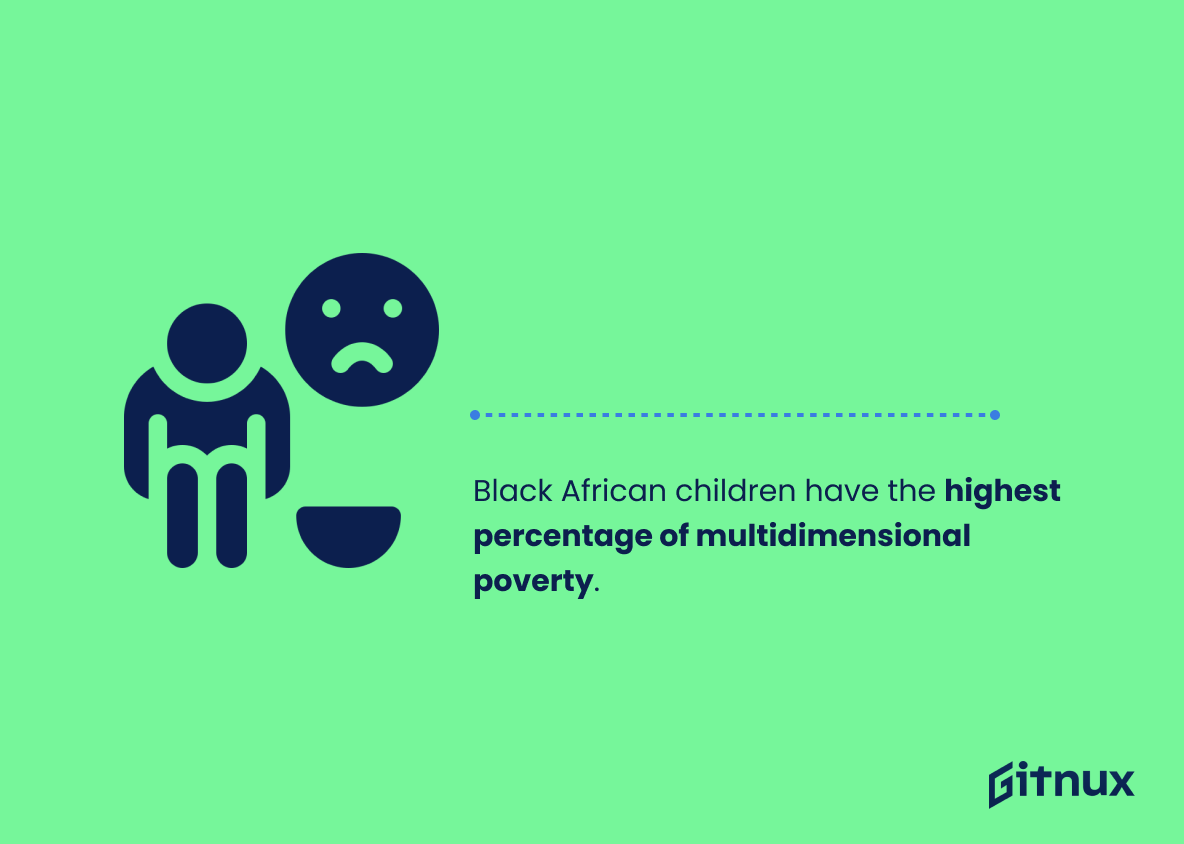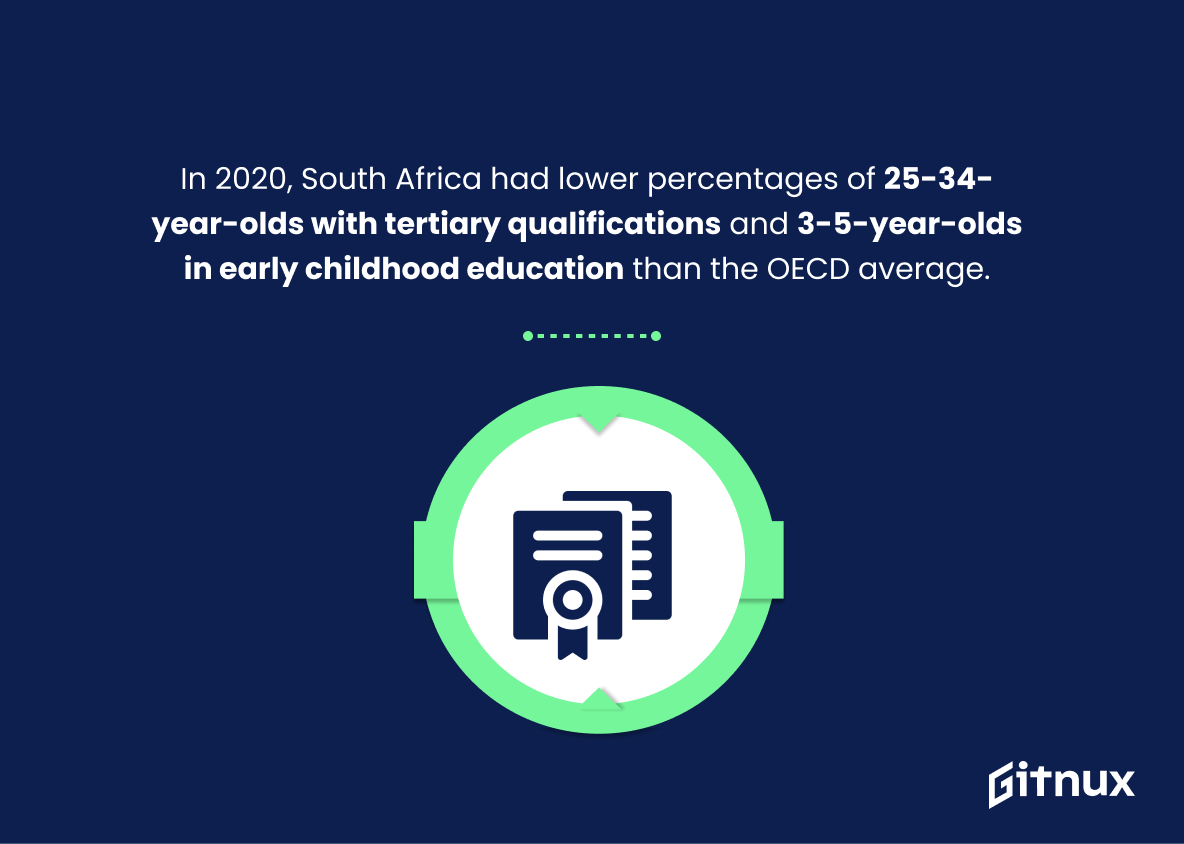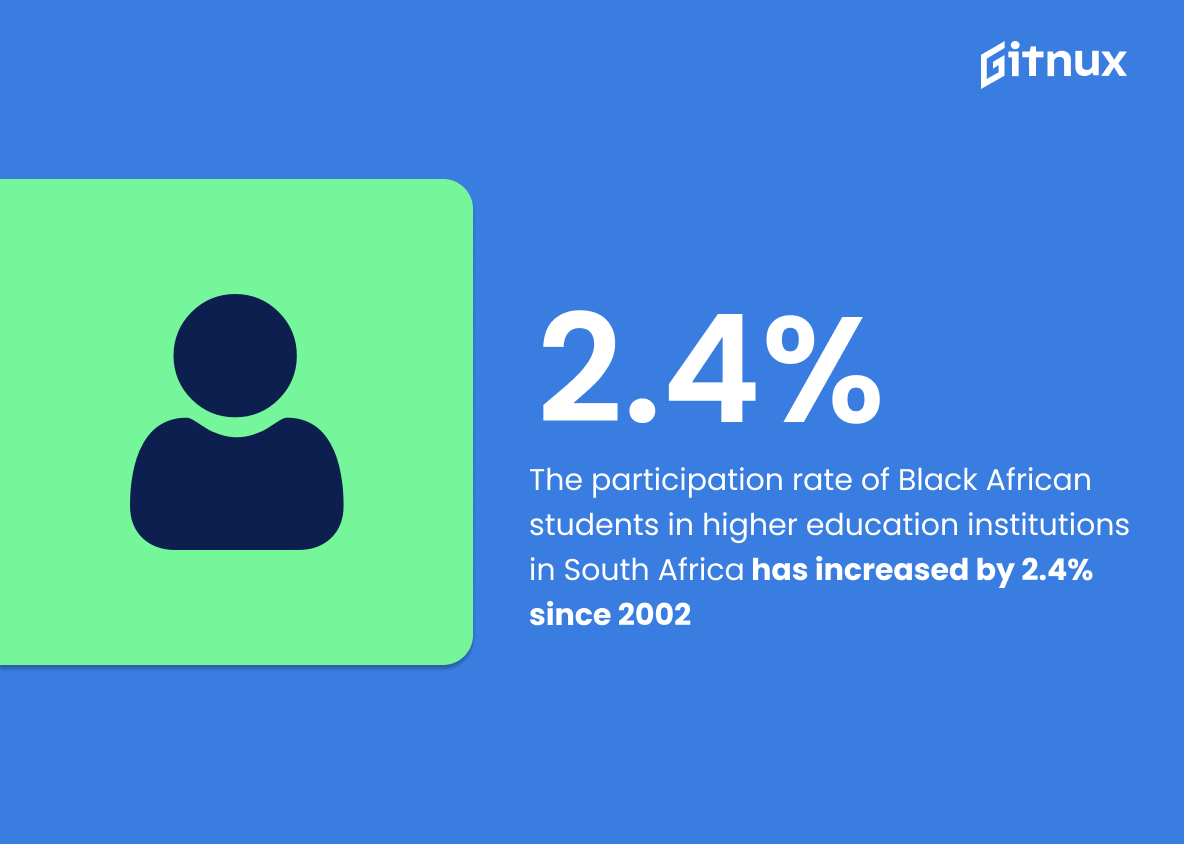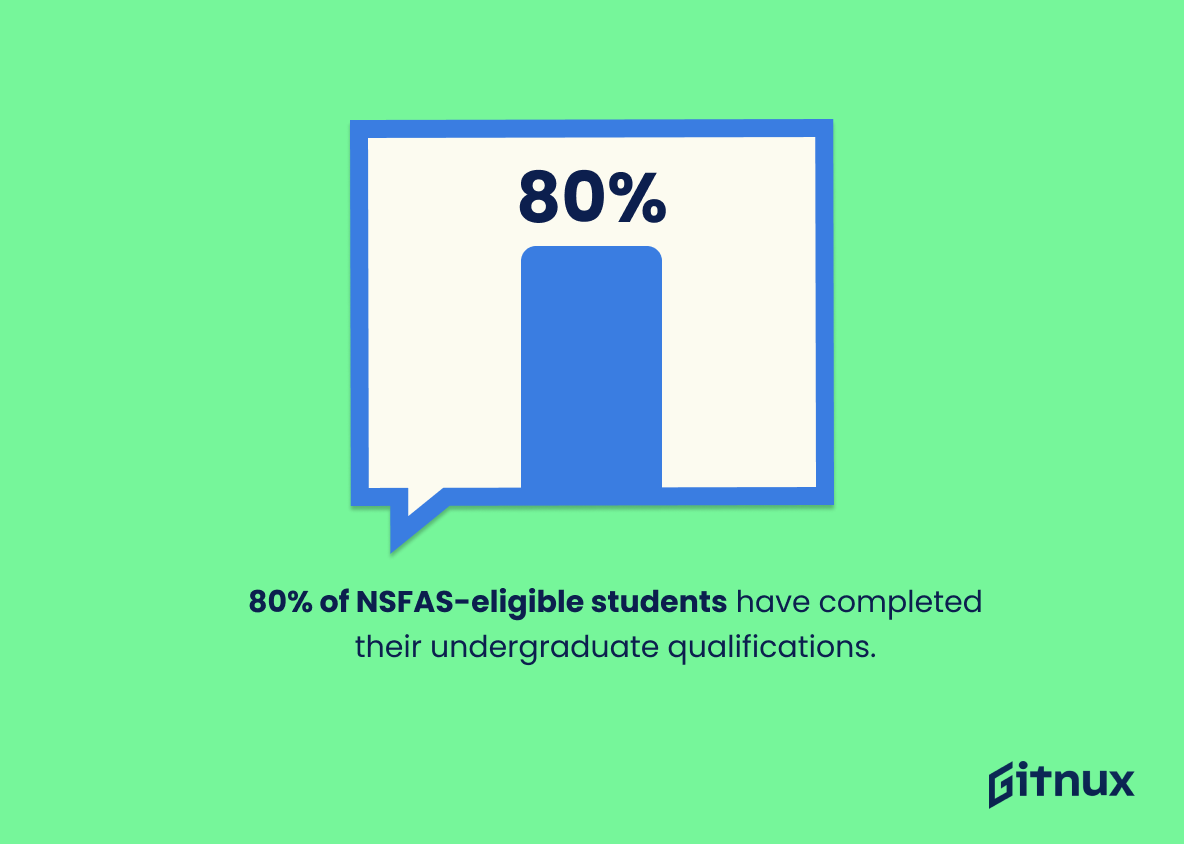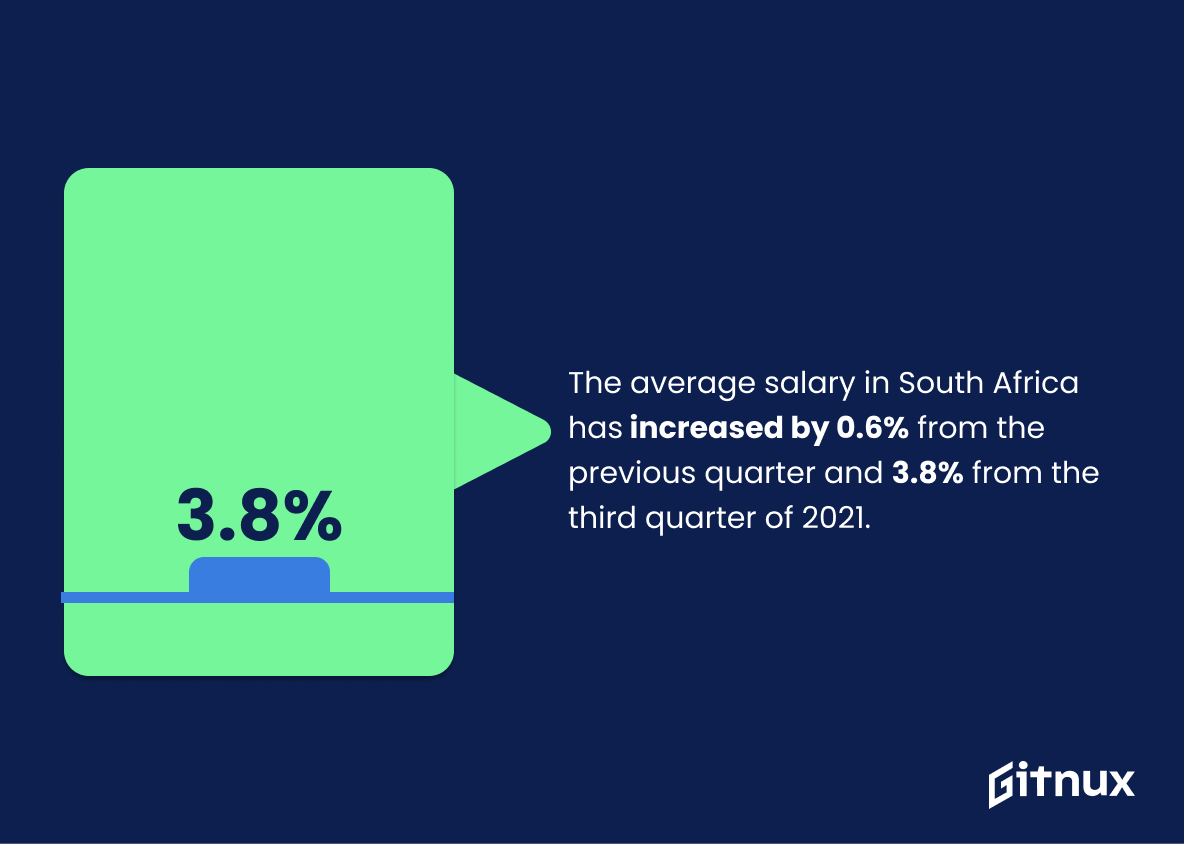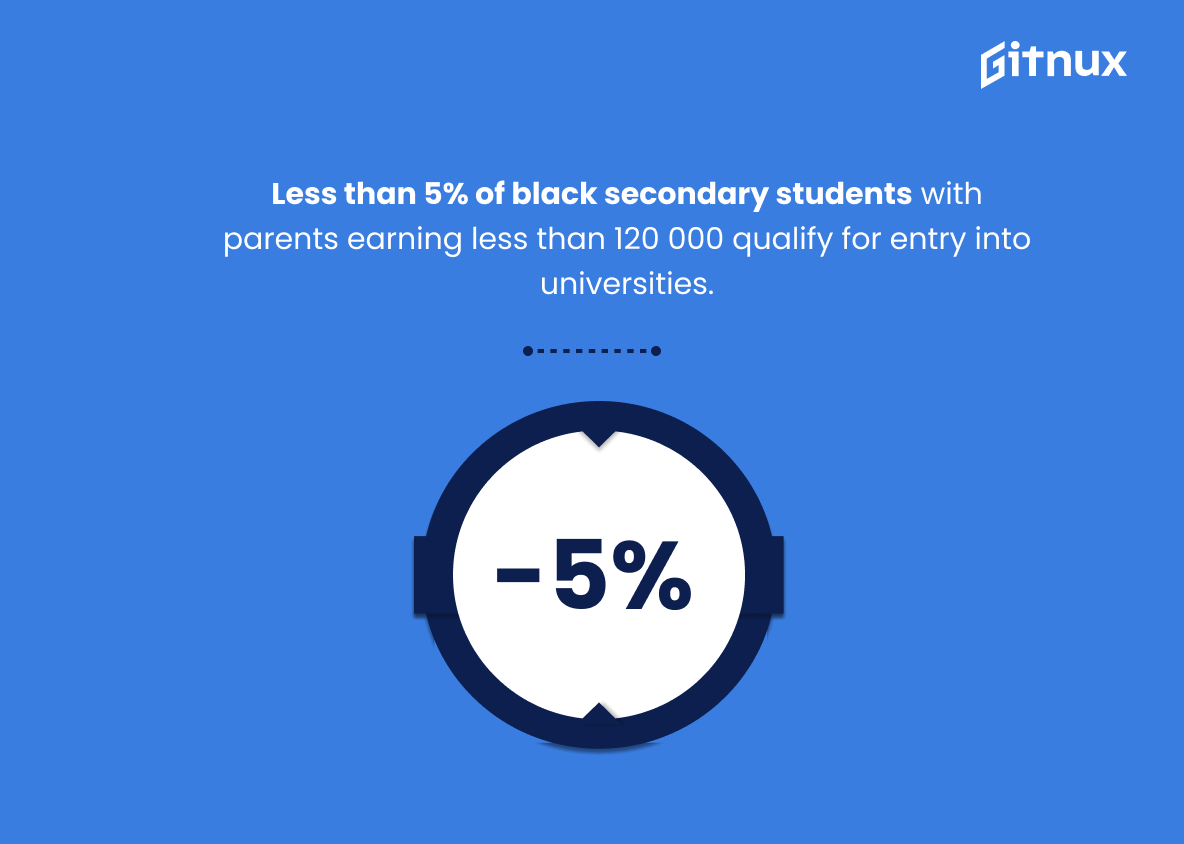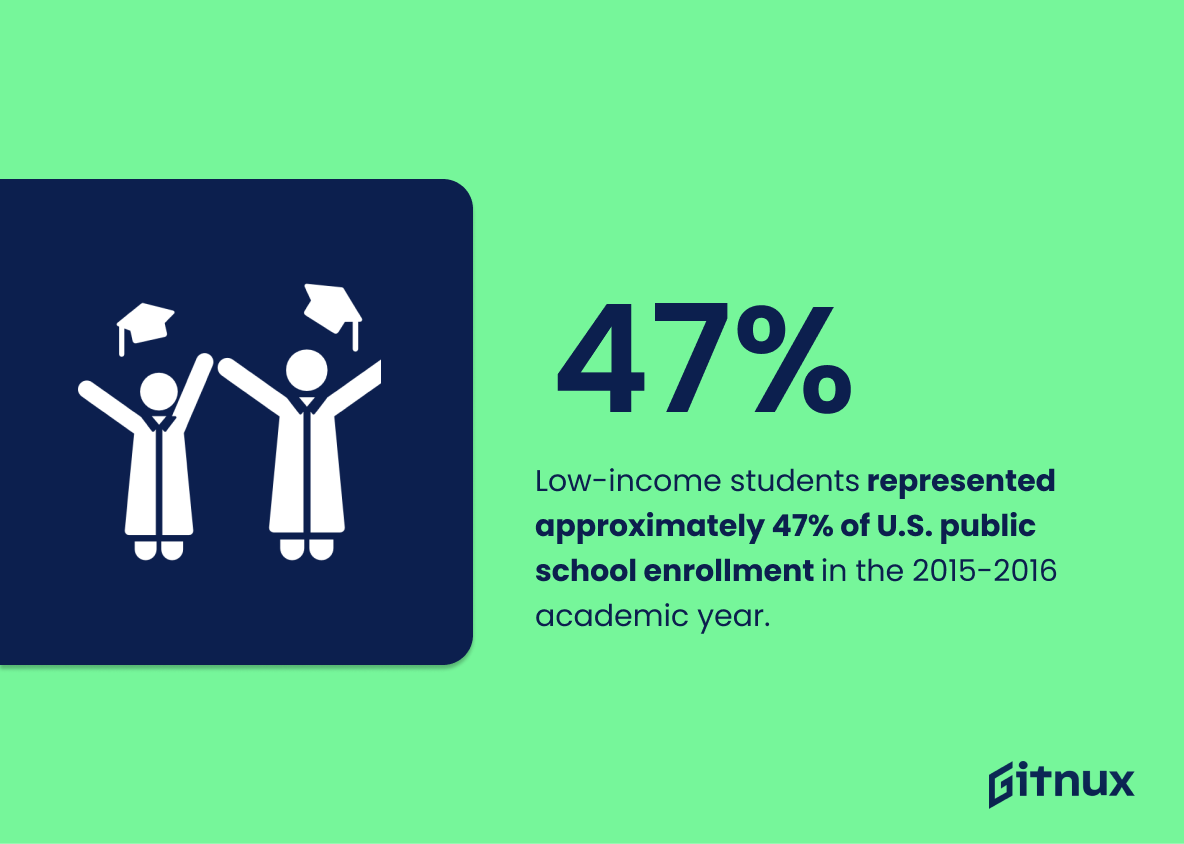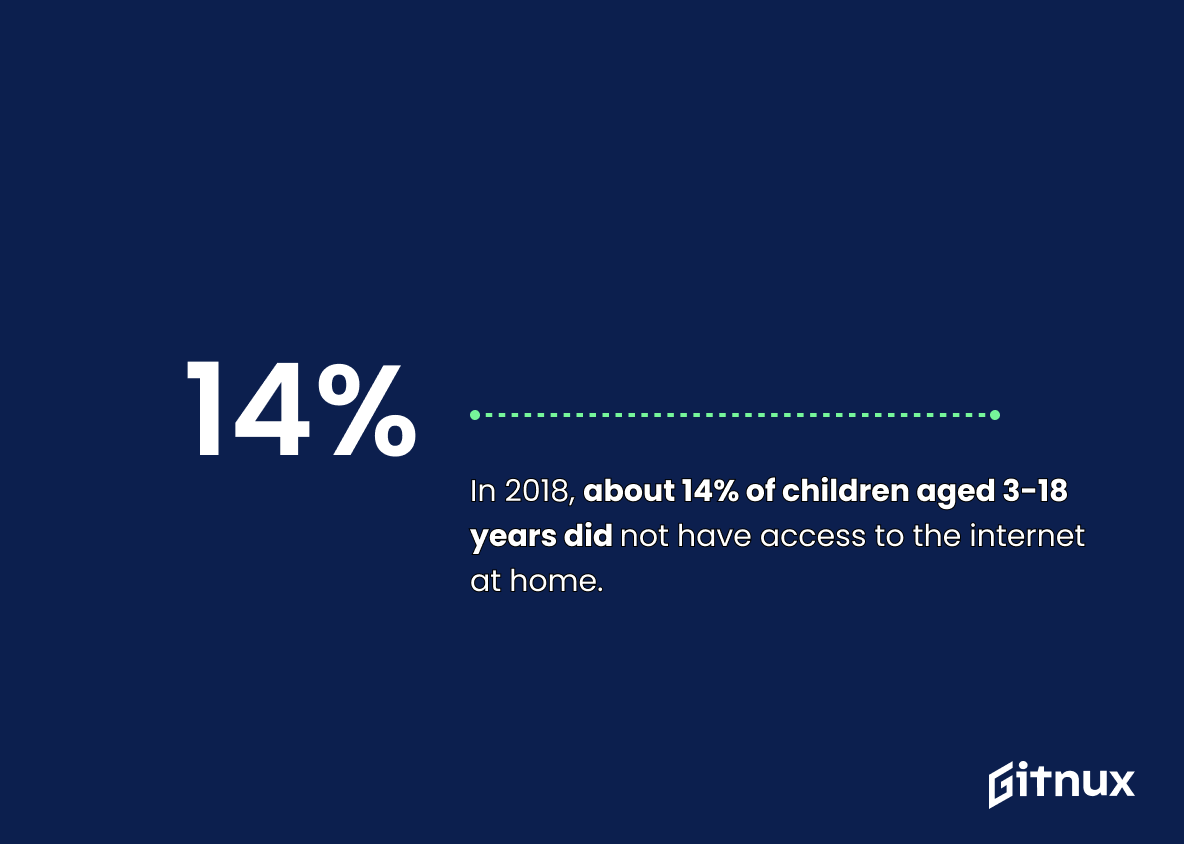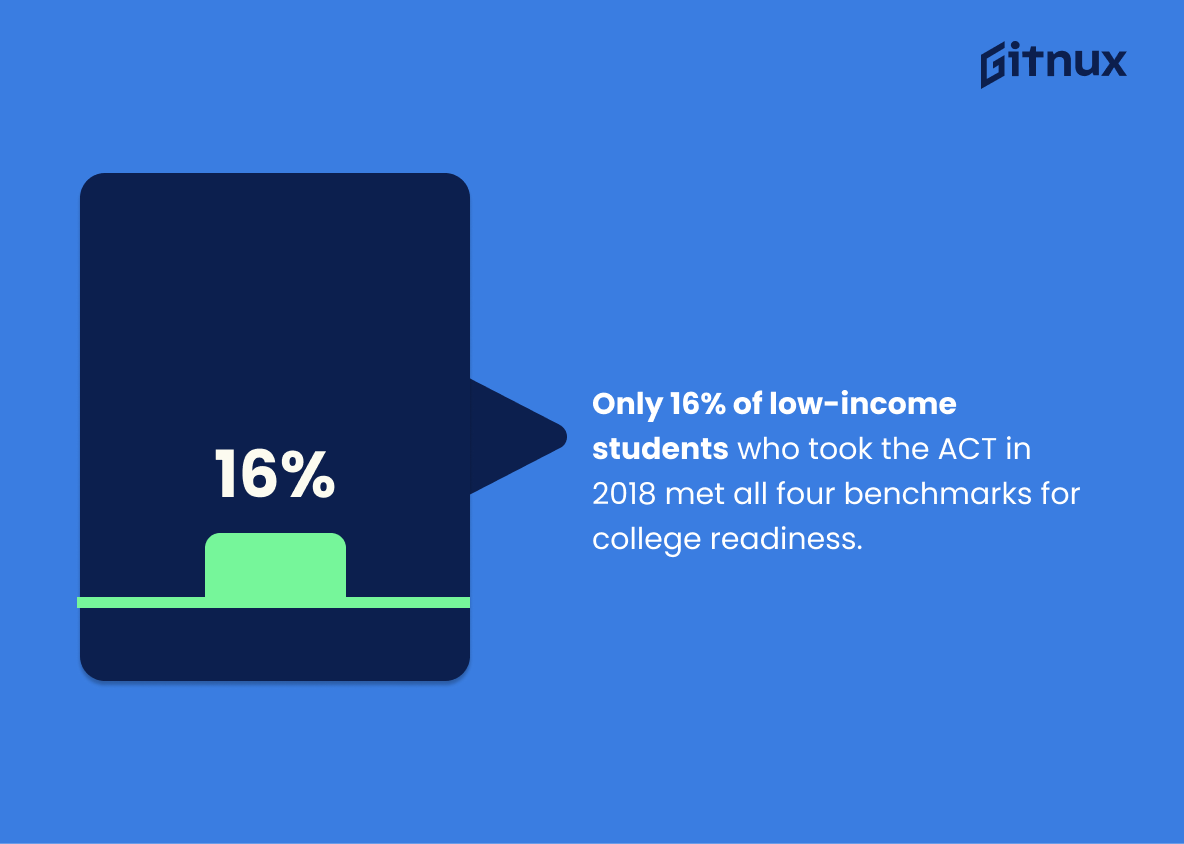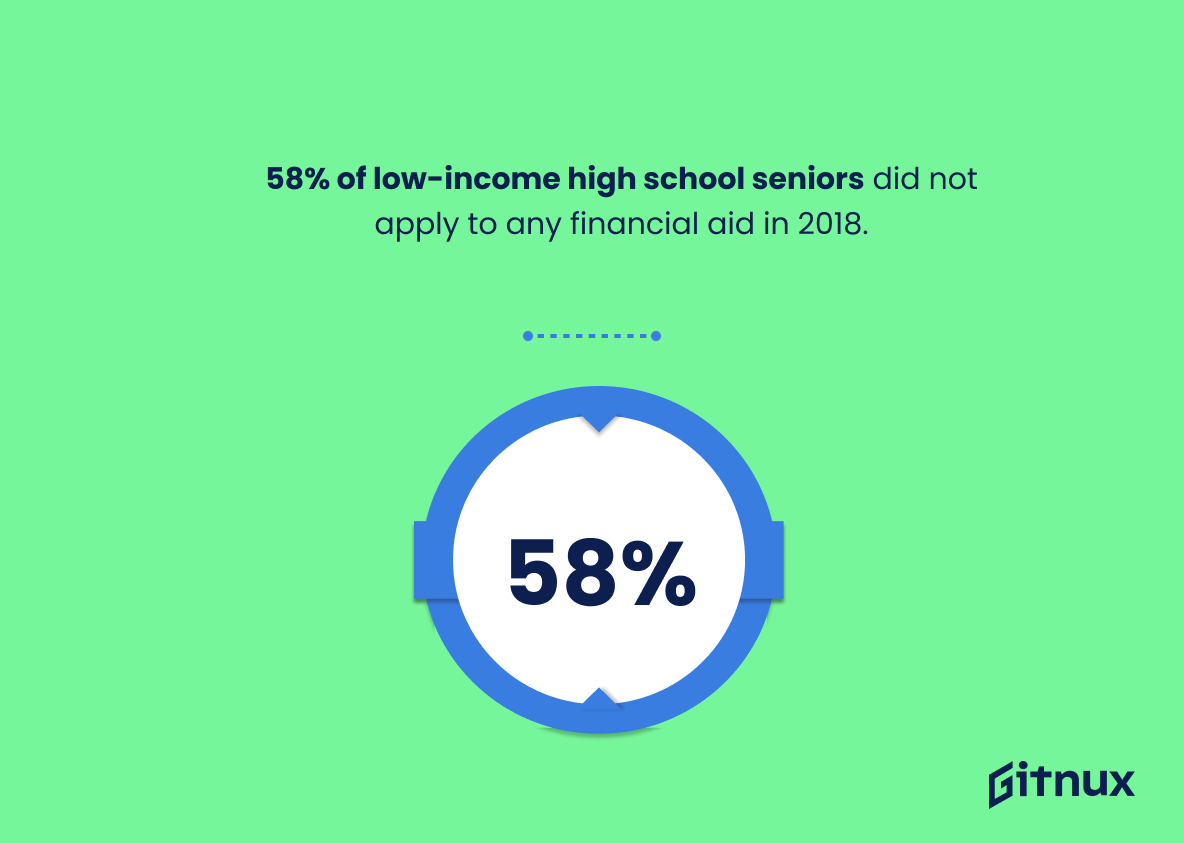As the cost of college continues to rise, low-income students are increasingly being left behind. Despite the fact that low-income students are more likely to enroll in college than ever before, they are also more likely to drop out due to financial constraints.
In this blog post, we will explore the latest statistics on low-income students and discuss the implications of these findings for higher education. We will also discuss potential solutions to help low-income students access and succeed in college.
Low-Income Students: Most Important Statistics
The median monthly salary in South Africa is R29,900, which means that half of the population earns less than the average salary.
The participation rate of Black African students in higher education institutions in South Africa has increased by 2.4% since 2002, yet remains lower than Indian/Asian and White populations.
Low-Income Students: Statistics Overview
This shows that 12 million students, or 60.9%, are enrolled full-time in college, with 6.6% of American adults enrolled in college as part-time or full-time students. Additionally, 1.075 million enrolled students were foreign-born.
College enrollment is increasing, which could potentially provide more opportunities for low income students to access higher education.
Additionally, the statistics show that more foreign-born students are enrolling in college, which could provide more resources and support for low income students.
NSFAS will spend R47.3 billion to fund 691 432 students, with 462 983 female and 227 072 male students, with a projected 10% growth in student numbers for TVET colleges.
NSFAS is committed to providing financial aid to those who need it, regardless of gender, and is willing to invest in the future of South African students.
Black African children have the highest percentage of multidimensional poverty compared to other population groups.
Black African children are the most disadvantaged population group in terms of poverty. This means that they are more likely to experience the negative effects of poverty such as lack of access to education, health care, and other basic needs.
This statistic highlights the need for targeted interventions to address the issue of poverty among Black African children.
The median monthly salary in South Africa is R29,900, which means that half of the population earns less than the average salary.
A large portion of the population is earning below the average salary, which could mean that many students are not able to access the same educational opportunities as those with higher incomes.
This could lead to an unequal distribution of educational resources and create a gap between students of different socio-economic backgrounds.
In 2020, South Africa had a lower percentage of 25-34 year-olds with tertiary qualifications and 3-5 year-olds enrolled in early childhood education programmes than the average across OECD countries.
This highlights the need for increased access to education for low-income students in South Africa.
The participation rate of Black African students in higher education institutions in South Africa has increased by 2.4% since 2002, yet remains lower than Indian/Asian and White populations.
This highlights the need to provide more resources and support to Black African students in order to ensure that they have equal access to higher education.
This is especially important for low-income students, as they are often disproportionately affected by the lack of resources and support.
80% of NSFAS-eligible students have completed their undergraduate qualifications.
Despite coming from low-income backgrounds, many students are still able to complete their undergraduate qualifications. This is significant because it demonstrates that low-income students are able to access the resources they need to succeed in their studies, and that the NSFAS scheme is effective in providing support to those who need it.
38 colleges in the US have more students from the top 1% than the bottom 60%, with graduation rates for disadvantaged students being 10-25% lower than the overall rate.
There is a clear disparity in access to higher education for those from different socioeconomic backgrounds. This disparity is further highlighted by the lower graduation rate for disadvantaged students, which indicates that even if they are able to gain access to higher education, they may not have the resources or support to complete their degrees.
This statistic highlights the need for universities to not only admit more disadvantaged students, but also to ensure they are supported throughout their degrees.
The average salary in South Africa has increased by 0.6% from the previous quarter and 3.8% from the third quarter of 2021.
The average salary in South Africa is increasing, which could mean that more people are able to afford to send their children to school and have access to higher education.
This could lead to an increase in the number of low-income students attending college and university, which could have a positive impact on the economy and society as a whole.
Less than 5% of black secondary students with parents earning less than 120 000 qualify for entry into universities while 70% of those with parents earning more than 600 000 qualify, and only 50% of those who have entered the system have managed to graduate five years after entry – highlighting the huge disparity between low and high income students and the challenge of poor access and high dropout rates.
This highlights the huge disparity between low and high income students and the challenge of poor access and high dropout rates.
This suggests that there is an inequality in access to higher education, with those from lower income backgrounds facing greater barriers to entry and success. This has important implications for social mobility and access to opportunities, as those from lower income backgrounds are less likely to be able to access higher education and benefit from its advantages.
Low-income students represented approximately 47% of U.S. public school enrollment in the 2015-2016 academic year.
This highlights the need for increased resources and support for these students, as well as the need for greater access to quality education for all.
Only 56% of low-income students entering postsecondary education complete their degree within six years compared to 78% of high-income students.
Low-income students are far less likely to complete their degree within six years, indicating that they are at a disadvantage when it comes to accessing higher education. This statistic is a powerful illustration of the need for increased support and resources for low-income students in order to ensure that they have the same opportunities as their high-income peers.
In 2018, about 14% of children aged 3-18 years did not have access to the internet at home, and low-income households tend to have less access.
Many children from low-income households are missing out on the educational opportunities that the internet provides. This is especially concerning in an increasingly digital world, where access to the internet is becoming increasingly important for educational success.
Only 16% of low-income students who took the ACT in 2018 met all four benchmarks for college readiness.
Despite the best efforts of educators and parents, many low-income students are not receiving the same level of preparation for college as their wealthier counterparts. This statistic is a call to action for those who are in a position to make a difference in the lives of these students, and to ensure that they have the same opportunities to succeed.
58% of low-income high school seniors did not apply to any financial aid in 2018.
This highlights the need for more resources and support for these students, as well as the need for more education and awareness about the importance of applying for financial aid.
In 2016, only 7% of low-income students graduated in STEM fields compared to 14% of high-income students.
This highlights the need for more resources and support for low-income students to ensure they have the same opportunities as their high-income peers.
In 2016, low-income students earned bachelor’s degrees at a rate of 49.5% compared to 78.2% of high-income students.
Low-income students are significantly less likely to earn a bachelor’s degree than their high-income peers, a disparity that has significant implications for their future success.
As of 2018, 47% of K-12 students are eligible for free or reduced-price school meals.
This speaks to the need for increased access to resources and support for low-income students, who are often at a disadvantage in terms of educational opportunities and outcomes.
Approximately 41% of undergraduate students were low-income in 2017-2018, receiving Pell Grants.
A significant portion of the undergraduate student population is struggling to make ends meet and is in need of financial assistance. This statistic is a call to action for universities and other organizations to provide more resources and support to these students in order to ensure their success.
During 2012-2016, low-income students accounted for about 48% of public two-year college enrollments.
These institutions are a vital resource for those who may not have the financial means to attend a four-year college or university. It also speaks to the need for increased support for these students, both in terms of financial aid and other resources, to ensure that they have the same access to higher education as their more affluent peers.
Low-income students are four times more likely to drop out than higher-income peers due to financial reasons.
This highlights the need for more resources and support for these students, so that they can have the same opportunities as their higher-income peers.
In 2017, about 20% of low-income children did not have access to high-quality pre-K education.
This highlights the need for increased access to high-quality pre-K education for low-income children, so that they can have the same educational opportunities as their more privileged peers.
Low-income students are 2.4 times more likely to attend a high-poverty school than their higher-income peers.
Low-income students are disproportionately affected by poverty and are more likely to attend schools with limited resources and fewer opportunities. This statistic is a call to action to ensure that all students, regardless of their income level, have access to quality education and the resources they need to succeed.
In 2015-2016, 32.8% of low-income students were chronically absent from school, compared to 8.7% of high-income students.
That low-income students are more likely to miss school than their high-income peers, which can have a significant impact on their academic performance and future success.
Approximately 50% of low-income students feel unprepared for college or the workforce after high school graduation.
This highlights the need for more resources and support for low-income students to ensure they have the same opportunities to succeed in college and the workforce as their more privileged counterparts.
62% of low-income families struggle to afford sufficient, nutritious food.
This highlights the need for greater support and resources to ensure that all families, regardless of their income, have access to the food they need to stay healthy and thrive.
In 2017, only 55% of low-income students entered college right after high school compared to 87% of their higher-income peers.
Low-income students are at a distinct disadvantage when it comes to pursuing higher education, and that more needs to be done to ensure that all students have the same opportunities to succeed.
80% of low-income students who were identified as high-achieving in high school did not apply to a single selective college in 2015.
Despite having the potential to succeed, many of these students are unable to take advantage of the opportunities available to them due to financial constraints. This statistic highlights the need for more support and resources to be made available to low-income students so that they can pursue their educational goals.
Conclusion
In conclusion, the statistics on low-income students are concerning. Low-income students are more likely to experience academic difficulties, have lower college enrollment rates, and are more likely to drop out of college.
These issues are compounded by the fact that low-income students often lack access to resources and support that could help them succeed. It is important that we work to bridge the gap between low-income students and their higher-income peers by providing resources and support that can help them succeed in school and beyond.
References
1 – https://educationdata.org/college-enrollment-statistics
2 – https://www.sanews.gov.za/south-africa/nsfas-2022-funding-reaches-691-432-students
3 – https://www.statssa.gov.za/?p=13438
4 – https://www.rateweb.co.za/career-advice/average-salary-in-south-africa-for-2020/
5 – https://gpseducation.oecd.org/CountryProfile?primaryCountry=ZAF&treshold=5&topic=EO
6 – https://www.statista.com/statistics/1115545/student-participation-rates-in-south-africa-by-population-group/
7 – https://www.careersportal.co.za/news/this-group-of-students-still-qualifies-for-nsfas-funding
8 – https://www.universityworldnews.com/post.php?story=20191211090045953
9 – https://businesstech.co.za/news/wealth/652085/this-is-the-average-salary-in-south-africa-right-now-8/
10 – https://www.cmi.no/publications/6180-crisis-at-south-africas-universities-what-are-the
11 – https://files.eric.ed.gov
12 – https://nscresearchcenter.org
13 – https://www.naeyc.org
14 – https://www.childtrends.org
15 – https://frac.org
16 – https://www.aei.org
17 – https://nces.ed.gov
18 – https://www.nces.ed.gov
19 – https://www.act.org
